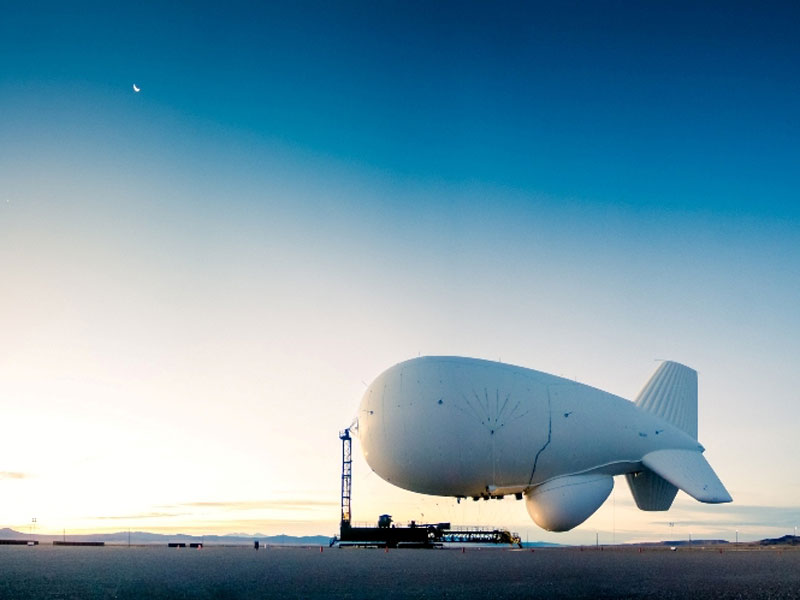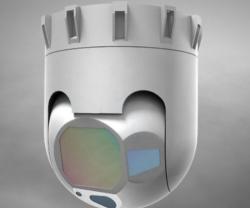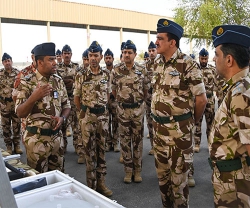For the first time, the U.S. Army lofted a blimp equipped with a new cruise-missile and drone-fighting radar system high above rural Maryland. The system, made by Raytheon Company and known as JLENS, consists of two helium-filled aerostats, or tethered blimps, that float 10,000 feet above the ground and carry powerful radars.
“JLENS is strategically emplaced to help defend Washington D.C. and a Texas-sized portion of the East Coast from cruise missiles, drones and hostile aircraft,” said Dave Gulla, Vice President of Raytheon Integrated Defense Systems' Global Integrated Sensors business.
“JLENS can detect potential threats at extremely long ranges, giving North American Aerospace Defense Command more time to make decisions and more space to react appropriately,” he added.
As part of the deployment, Raytheon engineers raised one of the football-field sized aerostats thousands of feet in the air and conducted a series of tests to ensure it was operating as designed. The company will continue to test and integrate the radar for several more days, then turn the first JLENS balloon over to Soldiers of the U.S. Army's A Battery, 3rd Air Defense Artillery.
The second aerostat is scheduled to go aloft in early 2015. Following a series of additional tests, it will also be turned over to the Soldiers, who will conduct an operational exercise with JLENS.
During the exercise, information from JLENS will be used by NORAD, the U.S.-Canadian organization charged with aerospace warning, aerospace control and maritime warning for North America. The 263rd Army Air and Missile Defense Command, which is responsible for defending the airspace over the National Capital Region, will also use information from JLENS.
Another JLENS system is in strategic reserve, ready to be deployed anywhere in the world at the request of combatant commanders, should they require comprehensive cruise missile defense capability.
A JLENS system, known as an orbit, consists of ground equipment and an integrated radar system on two tethered, 80-yard aerostats, which fly at altitudes of 10,000 feet above sea level and remain aloft and operational for 30 days. This capability better enables Commanders to defend against threats including cruise missiles, drones, and aircraft. JLENS also provides ascent phase detection of tactical ballistic missiles and large-caliber rockets.
JLENS completed developmental testing in December, 2013 and has demonstrated its ability to integrate with defensive systems and help Patriot, AMRAAM, NASAMS and Standard Missile 6 intercept cruise missile targets.
Furthermore, JLENS proved it can detect and track short-range ballistic missiles in their boost phase during a series of tests in 2013.






















